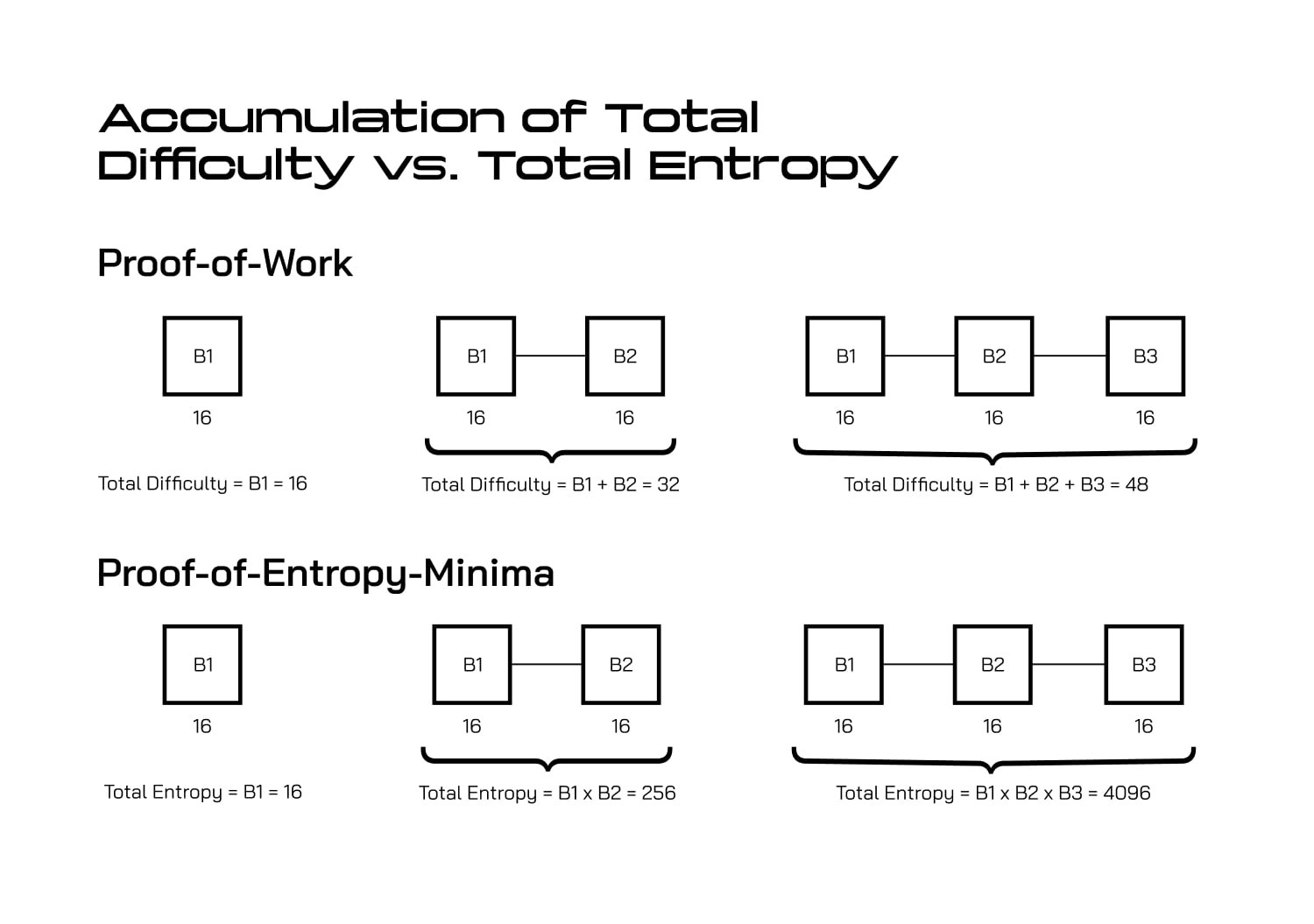From Single Blocks to Entire Chains
We’ve seen how PoEM measures the exact work in a single block. But how do we compare entire blockchains? This is where total entropy comes in. Think of it like this:- Single block: “How hard was this math problem?”
- Entire blockchain: “How hard was this entire series of math problems?”
Why Entropy Instead of “Work”?
Entropy is a physics concept that measures randomness or disorder. When miners find a block, they’re essentially reducing randomness by finding a very specific, ordered hash. The Key Insight: The amount of randomness removed (entropy reduced) directly corresponds to the energy spent creating that order. Real-world analogy:- Messy room (high entropy) → Clean room (low entropy)
- Energy required to organize = Entropy reduced
- More organized = More energy spent = Lower entropy
Geometric vs Linear: Why It Matters
Traditional PoW (Linear Addition):- Block 1: 16 difficulty points
- Block 2: 16 difficulty points
- Block 3: 16 difficulty points
- Total: 16 + 16 + 16 = 48 points
- Block 1: Removes 1/65536 of possible states
- Block 2: Removes 1/65536 of remaining states
- Block 3: Removes 1/65536 of remaining states
- Total: (1/65536) × (1/65536) × (1/65536) = Much more security
- Exponential security: Each block makes the chain exponentially harder to recreate
- Real probability: Reflects the actual odds of recreating the work
- Better comparison: More accurately measures which chain required more total energy
Think of it like compound interest: adding 10% three times gives you 130%, but compounding 10% three times gives you 133.1%. The difference becomes massive over many blocks.

Step-by-Step Calculation
Step 1: Calculate Single Block Entropy
For each block, we calculate how much randomness it removed: Simple Version: More leading zeros = more randomness removed Precise Formula:- Block with 16 leading zeros: 1/65,536 states removed
- Block with 17 leading zeros: 1/131,072 states removed (twice as rare!)
Step 2: Calculate Chain Total
For an entire blockchain, we multiply all the individual block entropies together: Formula:- Block 1: 1/65,536
- Block 2: 1/65,536
- Block 3: 1/131,072
- Total: (1/65,536) × (1/65,536) × (1/131,072) = 1 in 563 trillion
Practical Implementation: Using Logarithms
The Problem: Those numbers get huge fast! After just 10 blocks, we’d be dealing with numbers so large they’re impossible to store efficiently. The Solution: Instead of storing the actual multiplication results, we use logarithms to convert multiplication into addition. How It Works:- Traditional storage: 1/65,536 × 1/65,536 × 1/131,072 = 0.000000000000234
- Logarithmic storage: 16 + 16 + 17 = 49 bits of entropy
- Manageable numbers: Addition instead of astronomical multiplication
- Exact precision: No loss of accuracy in comparisons
- Efficient storage: Quai uses 64 bits to store total entropy per chain
- Easy comparison: Higher entropy number = more secure chain
Key Takeaway: PoEM measures the exact probability of recreating any blockchain, giving it perfect objectivity when choosing between competing chains. The chain that would be hardest to recreate always wins.
